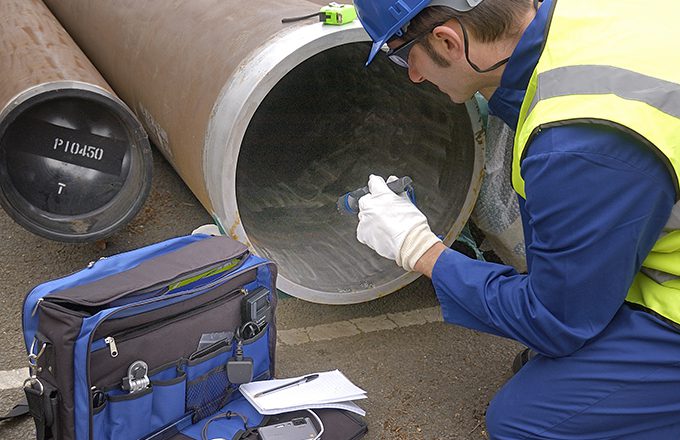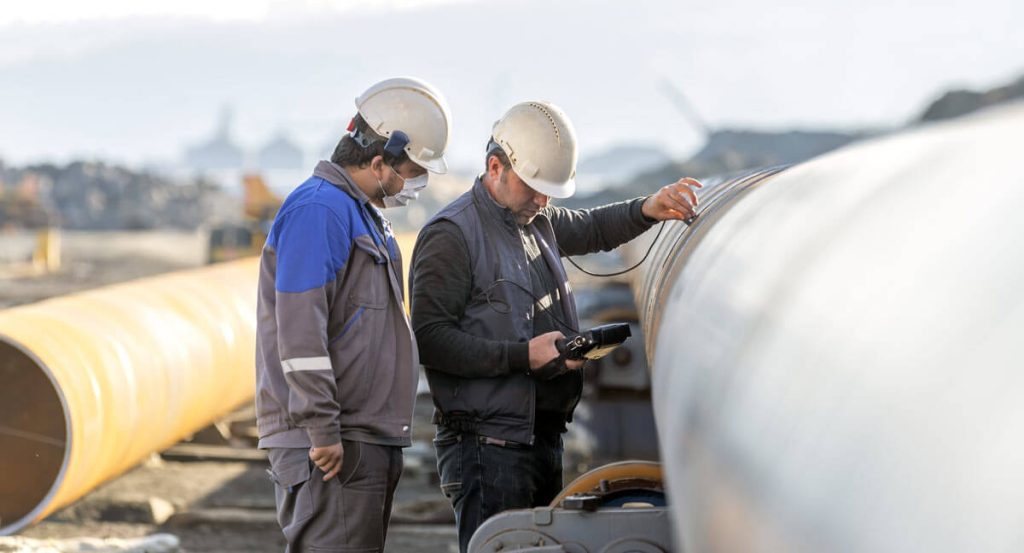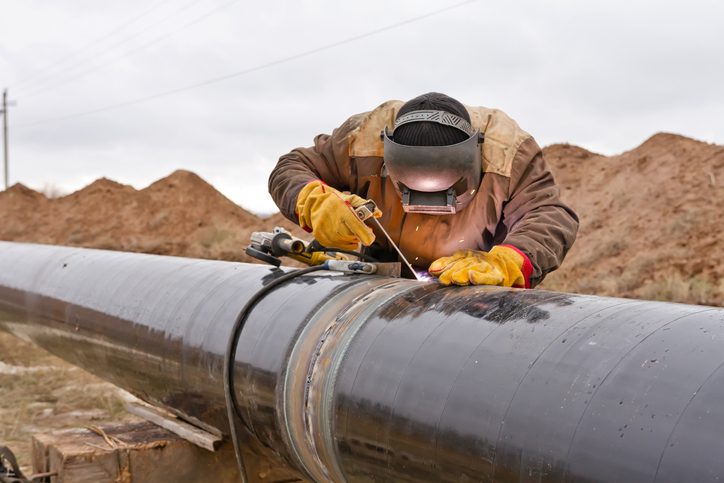Have you ever wondered what the purpose of a welding inspector is? Welding inspectors play a crucial role in ensuring the quality and safety of welded materials and structures.
By conducting thorough inspections, they strive to prevent potential defects, identify any issues, and maintain compliance with industry standards.
From ensuring proper welding techniques to verifying the strength and durability of welds, the purpose of a welding inspector is to uphold the highest standards in the welding industry.
Ensuring Compliance with Standards and Regulations
Understanding Industry Standards and Codes
As a welding inspector, one of your primary responsibilities is to deeply understand the industry standards and codes that govern welding practices.
These standards and codes are implemented to ensure welded structures’ quality, safety, and reliability. By familiarizing yourself with these standards, such as the American Welding Society (AWS) codes, you can effectively assess whether welding procedures and practices adhere to the established guidelines.
Verifying Welds Meet Quality Control Standards
Quality control is a crucial aspect of welding inspection. You must meticulously examine and verify that welds meet the specified quality control standards.
This involves assessing the visual appearance of welds, checking for proper weld dimensions and fit-up, and inspecting the adherence to proper welding techniques. Verifying compliance with quality control standards contributes to welded structures’ overall strength and durability.
Ensuring Compliance with Health and Safety Regulations
Ensuring compliance with health and safety regulations is paramount in welding. As a welding inspector, you play a critical role in safeguarding the well-being of both workers and the general public.
You must diligently assess whether welding practices adhere to the required health and safety regulations, such as wearing appropriate personal protective equipment (PPE), proper ventilation, and safe working procedures. Compliance with these regulations helps minimize the risk of welding-related accidents and injuries.
Inspecting Welding Equipment and Consumables
Checking Welding Machines and Accessories
Welding machines and accessories are crucial tools in the welding process. As a welding inspector, you are responsible for inspecting and verifying the condition and functionality of these machines and accessories.
This includes examining welding machines’ cables, connections, and controls to ensure they are in good working order. Additionally, you must inspect accessories such as welding torches, regulators, and wire feeders to ensure they suit the intended welding applications.
Examining Welding Electrodes and Filler Materials
Welding electrodes and filler materials are vital in achieving robust and durable welds. You must thoroughly examine these consumables to ensure their quality and reliability.
This involves checking the labeling and verifying that the electrodes and filler materials meet the required specifications. By conducting this inspection, you help ensure the integrity of the welds and minimize potential defects.
Verifying the Calibration of Welding Equipment
Accurate calibration of welding equipment is essential for achieving consistent and reliable welds. As a welding inspector, you must verify that the equipment is calibrated correctly.
This includes checking the calibration of welding machines, pressure gauges, and temperature indicators to ensure accurate and precise measurements during the welding process. By confirming the calibration, you contribute to the consistency and quality of the welds.
Assessing Welding Procedures and Welder Qualifications
Reviewing Welding Procedure Specifications
Welding procedure specifications outline the step-by-step instructions for carrying out a welding procedure. As a welding inspector, you are responsible for reviewing these specifications to ensure they meet the industry standards and codes.
You must assess whether the procedures adequately address the specific welding requirements, such as joint design, welding technique, and pre-heat/interpass temperature controls. Reviewing the welding procedure specifications helps ensure the welding process is planned and executed correctly.
Evaluating Welder Qualifications and Certifications
Welder qualifications and certifications provide evidence of a welder’s competence and proficiency in performing specific welding procedures. It is your role as a welding inspector to evaluate and verify the qualifications and certifications of welders.
This includes reviewing documentation such as welding procedure qualification records (WPQR) and performance qualification records (PQR). By assessing the welder qualifications, you can ensure that the welders possess the necessary skills and knowledge to execute the welding tasks properly.
Examining the Proper Handling of Welding Materials
Proper handling of welding materials is crucial for preventing defects and ensuring the quality of welds. As a welding inspector, you must examine whether proper procedures are followed in handling, storing, and identifying welding materials such as electrodes, filler wires, and shielding gases.
This includes assessing the storage conditions, preventing cross-contamination, and verifying the labeling accuracy of welding materials. By examining the proper handling of welding materials, you contribute to the overall integrity and quality of the welded components.
Performing Visual Inspections
Identifying Welding Defects and Discontinuities
Visual inspection is a fundamental aspect of welding inspection. It involves carefully examining welds for any visible defects or discontinuities. As a welding inspector, you must possess a keen eye for detail and be knowledgeable about welding defects, such as cracks, incomplete fusion, and porosity. By identifying and documenting these defects, you provide valuable information for addressing and rectifying any issues that may compromise the quality of the welds.
Checking Weld Dimensions and Fit-Up
Accurate weld dimensions and proper fit-up are essential for achieving sufficient strength and integrity welds. When performing visual inspections, you must check the weld dimensions and fit up against the specified requirements. This includes assessing joint geometry, weld size, and proper alignment. Ensuring that the weld dimensions and fit-up meet the standards contributes to the overall quality and reliability of the welded structures.
Ensuring Proper Welding Techniques are Followed
Proper welding techniques are essential for producing sound and defect-free welds. As a welding inspector, you must follow proper welding techniques throughout the welding process.
This involves verifying the correct electrode angle, travel speed, and weld deposition rate. By ensuring adherence to proper welding techniques, you contribute to the consistent quality and reliability of the welds.
Conducting Non-Destructive Testing (NDT)
Utilizing NDT Techniques like Radiography, Ultrasonic Testing, etc.
Non-Destructive Testing (NDT) techniques are invaluable tools for assessing the quality and integrity of welds without causing any damage. As a welding inspector, you must have knowledge and experience in utilizing various NDT methods such as radiography, ultrasonic testing, magnetic particle testing, and dye penetrant testing.
These techniques allow you to detect internal flaws, cracks, and discontinuities that may not be visible during visual inspections. By utilizing NDT techniques, you provide comprehensive and accurate insights into the soundness of the welds.
Inspecting Weld Joints for Cracks, Inclusions, or Porosity
Weld’s joints are critical areas that require a thorough inspection to ensure their quality and reliability. As a welding inspector, you must inspect weld joints for cracks, inclusions, or porosity that may compromise their structural integrity.
This involves utilizing various NDT methods to assess the internal quality of the welds and identify any potential defects. By inspecting weld joints, you provide vital information for addressing any issues and ensuring the overall effectiveness of the welding process.
Verifying Weld Soundness through NDT Methods
The soundness of welds refers to the absence of defects, discontinuities, or weaknesses that could compromise performance. NDT methods play a significant role in verifying and confirming the soundness of welds.
As a welding inspector, you are responsible for using these methods to assess the welds’ internal and external characteristics. By verifying weld soundness, you ensure that the welds meet the required quality and reliability standards.
Documenting Inspection Findings
Recording Defects and Non-Conformities
Accurate documentation of inspection findings is crucial to the welding inspector’s role. It is essential to record any defects, non-conformities, or deviations from the specified welding standards and procedures. This includes documenting identified defects or non-conformities, locations, types, and severity. By recording these findings, you record the inspection results, which can be used for further analysis, corrective actions, and quality improvement efforts.
Preparing Inspection Reports
Inspection reports formally record the inspection findings and provide a comprehensive overview of the inspected welds and structures. As a welding inspector, you must prepare detailed inspection reports that accurately summarize the inspection results, including any identified defects, non-conformities, or areas of concern.
These reports should be clear and concise and provide all relevant information to project stakeholders. By preparing thorough inspection reports, you facilitate effective communication and decision-making processes.
Maintaining Complete Welding Records
Maintaining complete welding records is essential for traceability and quality control purposes. As a welding inspector, you must ensure that all relevant documentation, including inspection reports, welding procedure specifications, welder qualifications, and certifications, are appropriately organized and maintained.
This helps demonstrate compliance with standards and regulations and provides a historical reference for future inspections and quality assessments. Maintaining complete welding records contributes to a transparent and accountable welding process.
Providing Technical Expertise and Recommendations
Advising on Welding Procedures and Best Practices
As a welding inspector, your expertise is precious in advising and guiding welding procedures and best practices.
Based on your extensive knowledge of industry standards and codes, you can offer recommendations for optimizing welding techniques, improving efficiency, and ensuring the long-term durability of welded structures. By sharing your technical expertise, you contribute to the continuous improvement of welding processes and the overall quality of the final product.
Offering Solutions for Welding Challenges
Welding challenges are inevitable in various projects and applications. As a welding inspector, part of your role is to analyze and provide solutions for these challenges. Whether addressing issues related to material compatibility, joint design, or weld quality, your expertise can help overcome these challenges effectively. By offering practical solutions, you facilitate the completion of welding projects while maintaining the required standards and specifications.
Collaborating with Engineers and Project Managers
Collaboration with engineers and project managers is essential for the smooth implementation of welding projects. As a welding inspector, your role often involves working closely with these professionals to ensure compliance with standards, resolve technical issues, and maintain quality control.
By collaborating effectively and providing timely feedback, you contribute to the overall success of welding projects and all stakeholders’ satisfaction.
Ensuring Welding Quality and Reliability
Preventing Weld Failures and Structural Integrity Issues
One of the main objectives of a welding inspector is to ensure the prevention of weld failures and structural integrity issues. By implementing the various inspection methods and techniques, you can identify potential defects, discontinuities, or weaknesses that may compromise the performance of welds and structures. You contribute to the overall quality and reliability of welded components through your expertise, vigilance, and commitment to compliance.
Promoting Longevity and Durability of Welded Components
Ensuring the longevity and durability of welded components is vital for their intended applications. As a welding inspector, you play a crucial role in promoting the selection of appropriate welding materials, techniques, and procedures that enhance the longevity and durability of welds. By helping prevent premature corrosion, fatigue, or weld failures, you contribute to the welded components’ overall performance and service life.
Improving Overall Welding Performance and Efficiency
Improving the overall welding performance and efficiency is a continuous objective for any welding operation. As a welding inspector, you can identify areas for improvement, suggest process enhancements, and promote best practices.
By actively participating in quality control measures and providing valuable feedback, you contribute to optimizing welding processes, resulting in improved productivity, reduced costs, and enhanced customer satisfaction.
Training and Educating Welders
Providing Guidance on Correct Welding Techniques
Welders rely on your expertise to guide them in performing correct welding techniques. As a welding inspector, you can educate welders on the proper procedures, joint design considerations, and welding parameters.
Providing guidance and training empowers welders to execute their tasks accurately, resulting in high-quality, defect-free welds. Your role in training and educating welders is critical in fostering a culture of continuous improvement and professional development.
Conducting Training on Welding Standards and Codes
Welding standards and codes are constantly evolving to meet the changing needs of the industry. As a welding inspector, you are responsible for staying updated with these standards and codes and passing that knowledge to welders.
By conducting training sessions on welding standards and codes, you ensure welders know the latest industry practices and help create a standardized approach to welding operations. This training enables welders to meet the required quality control standards consistently.
Promoting Continuous Professional Development
Continuous professional development is essential for welders to stay abreast of advancements in welding technology and best practices.
As a welding inspector, you can actively promote and encourage welders to engage in ongoing training and educational opportunities. By fostering a culture of continuous professional development, you contribute to the growth and advancement of the welding profession as a whole.
Safeguarding Public Safety
Reducing the Risk of Welding-Related Accidents
Welding processes can pose various safety hazards if not executed correctly. As a welding inspector, you are crucial in minimizing the risk of welding-related accidents.
Ensuring compliance with health and safety regulations, promoting proper equipment and materials handling, and conducting thorough inspections, you contribute to a safe working environment for welders and the general public.
Ensuring Compliance with Structural Integrity Standards
Structural integrity is of utmost importance in welding, especially in applications where the welded structures bear significant loads or are subjected to harsh environments. As a welding inspector, you must prioritize compliance with structural integrity standards.
This includes verifying that welding procedures and welders’ qualifications meet the specific requirements for the intended application. Ensuring compliance with these standards helps prevent potential structural failures that could have severe consequences.
Protecting Workers and the General Public from Hazards
The health and safety of workers and the general public must always be safeguarded in welding operations. As a welding inspector, you are responsible for identifying and mitigating potential hazards associated with welding.
This includes promoting appropriate personal protective equipment, ensuring proper ventilation, and following safe working practices. By actively addressing potential hazards, you contribute to a safer working environment, protecting the well-being of all involved parties.
In conclusion, the purpose of a welding inspector is to ensure compliance with industry standards and regulations, conduct thorough inspections, assess welding procedures and qualifications, perform visual and non-destructive testing, document inspection findings, provide technical expertise and recommendations, ensure welding quality and reliability, train and educate welders, and safeguard public safety.
By fulfilling these responsibilities, welding inspectors play a critical role in maintaining the integrity and safety of welded structures while promoting professional development within the welding industry.











































